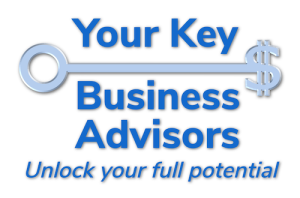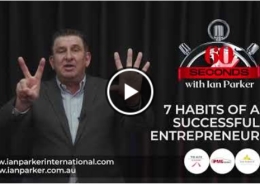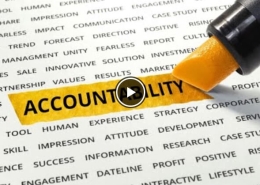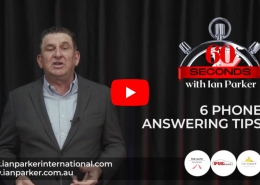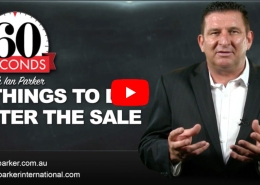Accountability and Expectation Quickie Tip
Using the REOWN Model for Accountability
The REOWN Model Quickie Tip video by Steve Riddle from Coach Station a Member of Your Key Business Advisors Network
In the video talk a little bit about Accountability and one of the important facets of accountability, which is clarity of expectation setting.
One of the things I’ve learned over the years through coaching and leading many more people in teams. Is that we believe we provide greater clarity of expectations than in actual practice that we do.
We know that to be true because surveys show us that when we ask our leaders about how accountable, they are and how much accountability they have within their teams
Also related to that how clarity of expectations sits within their team. They will often say that they believe their team members are all very clear about what’s expected of them.
When we speak to the same team members and ask them similar questions or have a similar conversation. The answer can be quite different. And so, as a consequence, I’ve created the REOWN Model.
REOWN is an acronym that stands for Relationships, Expectations, Observations, the Why or Impact and then the Measurement. And it’s ultimately a leadership model, really an accountability model.
But what I’ve learned to be true and I think most of you, hearing this and listening today. Would be in agreement that it’s very hard, for someone to hold themselves accountable. Or for us to hold them accountable. Without real clarity of expectations in the first place.
So the REOWN Model seeks to overcome that without making it all about a model for model sake. It does step you through a five step process that does assist with accountability and the clarity of expectations.
The REOWN Model
So the first step is about Relationships.
Leadership and relationships are intertwined. It’s very difficult to be an effective leader and to have any real accountability. If you don’t have a pretty substantial relationship in the first place.
We’re not talking about a friendship. So, this is not about having a beer on a Friday night.
This is about a trusted relationship where we can talk about whatever is required or whatever is most important without fear of avoidance or any other behaviour. Which is not going to encourage ownership from the employee. So, when we’ve got that cornerstone of a strong relationship.
We then talk about the Expectations.
When we’re talking about expectations. What’s interesting to me is initially obviously when you’re working with someone in the first few months. You need to be doing a lot of the talking, and you need to be sharing a lot of what the expectations are both in regard to how it fits with corporate as well as a KPI and a set of measurements. But also your expectations as a leader, but expectations must be understood.
The only way that I found that you can really get a clarity of expectations is by has the employee really understood what’s been asked to them, and do they think that they can follow through on that.
As if we asked a question something like, “in your words, tell me what I’ve asked you to do or what you’ve agreed to do today”.
And again, that re clarification and the paraphrasing back will give you a sense of clarity or understanding about what they heard. Because what we do find is that just because we’ve delivered and we’ve verbalized the expectations. That of course doesn’t mean that it’s been heard or interpreted the way that we intended it to do.
Then comes Observation
The biggest mistake that many leaders make is that we think we need to be telling people about how they’ve gone against that set of expectations or about the thing we asked or agreed to do. Or when I get them fast majority of the times, they’re more effective way to work with it is to be asking the question initially.
So how do you feel you’ve gone today? Or how do you feel you went last week when you were working through that expectation? And again, depending on the criteria and the way you’re probably not using expectations so commonly. But you’re talking about the team meeting, or you’re talking about the behaviour or whatever the expectation was related to.
And again, as the conversation progresses, of course, you’ll have the opportunity to provide your feedback. So, Observations aren’t just about self-observation. They’re also about what you observed and what you’ve seen.
Why and Impact is the fourth element
There is the wider impact and ultimately, that’s, that’s really about context. The context there is to make sure that we’re clear and both parties both you and the employer, team member are clear about why we’re talking about this.
It could be because we’ve agreed that you wanted to, in a few years time be a team leader. And so, I’m starting to expose you to different processes along the way that will provide you with greater business acumen or skills to lead that to that point. Where you’re more capable of being a team leader. Or at least put yourself in the running for that. For one example, and but it’s important to talk about the reasons why we’re talking about this.
The final step is about Measurement.
If we’ve got agreement and understanding can be just as powerful as any formal KPI or numerical measure, once the expectation setting agreed it’s been said and agreed. It doesn’t necessarily need to be something that has a numerical reference.
So that’s the five steps of the REOWN Model
- Set of Relationships and the trust that comes along with that.
- The Expectations are clarity, and
- we ask questions to clarify the Observations. Again, we asked more than we tell without regard, certainly in the early stages of the Observation section where we’re asking how they feel they’ve gone and then we provide feedback along the way.
- We ensure that their Why or the Impact or context is very clear, and there’s not the message isn’t being lost because of a lack of clarity.
- The then we talked about the Measurement. So, what are the outputs are the results?
How do we know that that that that expectation is being met.
So that’s the REOWN Model, and your opportunities to hold people accountable and more importantly for them to hold themselves accountable. Based on something more substantial.
I’m happy to talk further with Leadership, People and Business Development. Feel free to reach out or contact me Steve Riddle or any of my team at the Coach Station.
We are happy to walk through this a little further. As this is in fact one of the fundamental steps of all of the Business and Leadership Coaching and Mentoring that we do with any of our clients. The REOWN Model sits very comfortably in that space.
See more Key Quickie Business Tips at Your Key Business Advisors Network – https://yourkeyadvisors.com.au.
